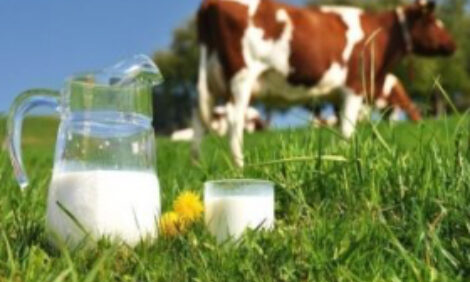



Planning For Successful Animal Welfare on Dairy Farms
Welfare is of course a priority for dairy farmers, but standardised assessments and schemes give the consumer piece of mind.Well considered welfare plans assist farms in keeping cows in good conditions and for this reason should be updated to make sure they are relevant.
This is according to William H Miner Institute expert Melissa Woolpurt who writes that welfare guidelines are common place in modern agriculture.
However, she stresses that they need a horses for courses for approach - there's no "one-size-fits all".
She writes that some farms or companies require third-party audits based on industry wide recommendations, while some prefer in-house auditing which often times has more strict regulations.
One of the most common and successful animal welfare evaluation tools for dairy farmers is the Farmers Assuring Responsible Management (FARM) program. While many welfare auditing and planning programs exist, little is reported about the effectiveness of different program strategies, especially for dairy farms.
Features of a Welfare Programme
A recent review article in the journal Animal Welfare detailed some of the key features found in successful animal welfare planning programs.
Farm animal welfare focuses on three main measures:
- biological functioning or the indicator of welfare in terms of animal health and productivity,
- affective state or the animal’s emotions
- natural living or their ability to express natural behaviour such as grooming or socializing.
Function versus Welfare
Dairy scientists have made several recommendations for optimizing biological function without compromising welfare. Examples of these recommendations include optimal stocking density and improved facility design. Progressive housing and management techniques have enhanced natural living for dairy cattle, as freestall housing allows animals to socialize and more recently robotic milking systems allow dairy cows to decide when they prefer to be milked.
Research on affective states is currently less common, but one way to access affective states may be to measure avoidance distance of dairy cattle towards humans.
Independent Perspectives
Dairy welfare plans are more likely to promote positive change when they are supported by a third party evaluator who has a relationship with the farm, such as the herd nutritionist or veterinarian. Research evaluated in the review article found that welfare indicators are not always perceived by farmers the same way that they are perceived by the third party evaluator.
This could be because farmers are used to seeing something a certain way, or because farmers lack the training to identify it. For example, farmers often underestimate lameness incidence, but are quite accurate at estimating mastitis, likely because they spend more time in the parlor evaluating milk quality than they do watching the cows walk.
If the evaluation is conducted by a third party evaluator, it’s important that the results are communicated in a concise and understandable way.
Start in Obvious Places
Farm animal welfare plans are more likely to result in a positive change if they target the one area that most needs improvement rather than attempting a comprehensive approach.
Benchmarking their farm against the regional average or the recommended level has been shown to successfully motivate farmers to implement change.
This goes without saying, but it’s also important that the on-farm plans are reviewed on a regular basis. A study of 61 UK dairy farms found that 87 per cent of dairy farms had a welfare plan, but only half of the farms had reviewed the plan within the last year.
Not surprisingly, farmers also reported that they were motivated to become involved in animal welfare improvement because they “take pleasure in healthy animals on the farm,” and are “proud of a healthy herd”. Recognizing that farmers are proud of their animal welfare changes may help drive them to implement further improvements.
There is no question that dairy farmers do their best to maximize animal welfare on their farms. However, animal welfare plans may be an important tool in increasing consumer confidence in meat, milk, and eggs.
In addition, animal welfare plans can be used to identify when there is room for improvement in a systematic and comprehensible way. The results highlighted in the article may be taken into consideration when developing and implementing welfare plans in order to obtain positive, lasting results that will ultimately benefit the farmers, the animals, and the industry as a whole.


